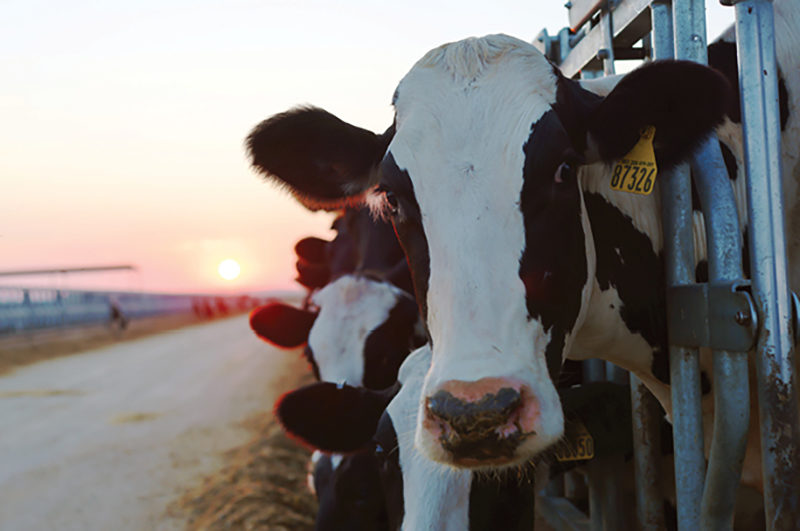The first flat screen TV was available to consumers in 1997. It was made by Fujitsu and measured 42 inches diagonally and cost around $17,500. The picture was grainy, and it only picked up cable television channels. By 2005, when Sony introduced the first LCD-based TV, the price had dropped to around $4,000, and the performance had significantly improved. Today you can buy a 43-inch TV at Walmart for less than $300 from a variety of companies that not only lets you watch TV in 4K but stream shows when connected to your WiFi. Times have changed.
Times have changed, too, with the price and performance of the technology you use on your dairy. The first record of an automatic activity monitoring system for use on dairies was in 1954. As hardware, software and general knowledge of the technology grew over time, activity monitoring started to be used more often on U.S. dairy herds in the 2000s.
Activity monitoring has followed somewhat the same path as the digital television. More companies have entered the marketplace as technology has evolved, which has increased the competition for technology development but also significantly reduced the price. Datamars entered the activity monitoring marketplace last year with the launch of the Tru-Test Active Tag system.
Helps Make More Informed Decisions
Like other activity monitoring systems, the Active Tag system identifies gestures that cows make throughout the day. That includes various activities that cows perform, such as walking, ruminating, eating, standing, any lying and so forth. The Active Tag system is unique because it uses state-of-the-art technology to identify these events and communicate that data to the cloud. Algorithms contained within the cloud-based structure do the heavy lifting of understanding what the activities are, then communicate back to the producer – using Bluetooth technology – the actions that should be taken.
No other activity monitoring company uses Bluetooth technology to communicate data, and no other company can scale the technology to adapt to any herd situation. And like today’s television, the cost is a fraction of what other companies can provide.
An example of the simplicity of the Active Tag system can be seen in health monitoring. The Active Tag system monitors activities cows make throughout the day and matches that against a baseline. An algorithm identifies activities that happen outside of a baseline for the cow and determines what the abnormal activities mean. An alert is sent indicating that an intervention is needed, including the current location of the cow so she’s easier to find. Other companies deliver health alerts whenever an activity is generated outside the normal baseline without an analysis of what the activity could indicate. That leads to a multitude of events that don’t necessarily need attention, which leads to frustration from employees. The Active Tag system provides actionable alerts rather than alerts that aren’t needed.

Plug and Play System
Training employees to use the Active Tag system is simple because it’s an out-of-the-box system. If you have a strong WiFi connection, all you need do is plug it in. It does take a few days to establish activity baselines – three days for heat detection and seven days for health traits – but employees will start getting alerts right away. Integration with existing herd management software is seamless, especially with other fully integrated cloud-based systems.
For producers who have sat on the sideline waiting for the price of activity monitoring systems to come down, the Tru-Test Active Tag system is an ideal solution. It’s different, more sophisticated, more accurate and more cost effective. In a word, it’s Smart.
Smart Technology for Smart Dairies
The smartness comes from the ability to collect actionable data producers can use to make more informed management decisions that benefit the welfare of the animals and the economics of your dairy. Smart also comes when you’re able to integrate the system with other technology elements, such as Walk Over Weighing. Correlating the weights with the activity monitoring really helps define what’s happening with the animal with a high degree of accuracy. As future technologies develop – artificial intelligence, for example – they will be able to integrate seamlessly into the complete system.
It comes down to putting data to work. With more technology integration, we’ll be able to utilize all the data points to create predictions that dairy producers need to save money and help make their operations more cost effective.
Our approach is similar to how today’s television manufacturers are able to make very sophisticated yet extremely cost-effective televisions that consumers demand. At Datamars, we took advantage of understanding what producers needed and what some of their pains were regarding existing activity monitoring systems. We applied our passion for innovation and technology development to create an advanced, cost-effective system producers can use to make accurate decisions about their operations. Our approach helps dairies get smarter and, along the way, more profitable.
How Smart Is Your Dairy? Find out by taking this short survey.
Written by Kyle Kunz, Smart Farming Director, Datamars Livestock









